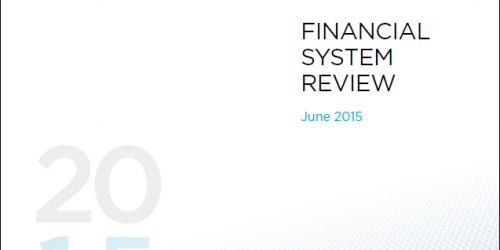Release of the Financial System Review
Good morning. Senior Deputy Governor Wilkins and I are happy to be here today to talk about the June issue of the Bank’s Financial System Review (FSR), which we published this morning.
The FSR highlights key financial vulnerabilities and the potential triggers that could turn those vulnerabilities into risks to the stability of the Canadian financial system. To be clear, the FSR isn’t our prediction of the most likely outcomes. Rather, it identifies vulnerabilities and the triggers that could expose them, judges the probability of the key risks occurring, and evaluates the potential impact should the risks materialize.
The FSR’s analysis complements the work in our Monetary Policy Report (MPR) and provides the basis for a complete discussion of monetary policy within our risk-management framework. Economic and financial stability are interrelated, so we need to consider the risks to both in an integrated way. Let me elaborate by talking about the impact of the plunge in oil prices on both financial stability risks and the risks to inflation.
As we discussed in the January and April MPRs, the oil price shock posed a material downside risk to our inflation profile. We responded in January by lowering our key policy interest rate. This accomplished two things. First, it reduced the downside risk to inflation by helping bring the economy back to full capacity over our projection horizon. Second, the cut helped mitigate the risk to the financial system by addressing the drop in incomes and employment caused by the oil price shock.
Since then, we have seen a modest pickup in household debt, as well as a slowdown in income growth. In today’s FSR, we note that the vulnerability related to household indebtedness has increased. Our analysis shows that debt-bearing households in the oil-producing regions are more likely to be vulnerable than elsewhere.
But while the oil price shock has had a negative impact on Canadian incomes, it’s our judgment that it won’t undermine the stability of the financial system as a whole. The effect of the drop in incomes from the oil price shock should be partly offset by a number of factors. These include cheaper gasoline, stronger U.S. economic growth, the lower Canadian dollar and the impact of easier monetary policy.
Another key vulnerability that we’re monitoring is the imbalances in the housing market. Housing is important to the wealth of many Canadians, and their net worth is affected by a decline in house prices.
In recent months, resales and prices in the Toronto and Vancouver areas have continued to increase, while the markets in most other parts of the country have been moderating. Although house price growth on a national basis has slowed modestly, it continues to outpace income growth, and overvaluation in the Canadian housing market remains a concern.
Still, the probability that a sharp correction in house prices will materialize remains low. We are not seeing the conditions that would lead to a severe recession and a steep rise in unemployment. So we continue to expect that the imbalances in the household sector and the housing market will ease as the economy improves.
In sum, we judge that the vulnerability associated with household indebtedness is edging higher, and the overall risk to financial stability in Canada is slightly higher than it was at the time of our December FSR.
At the same time, we shouldn’t forget that there have been tremendous reforms in the global and Canadian financial systems that have been designed to reduce the likelihood and impact of future turmoil. There is no question that the global financial system is now more resilient, thanks to these reforms. So, while risks may have edged higher, safeguards to protect the financial system are stronger than they were before.
Finally, I’d note that the FSR contains reports that take a closer look at aspects of the Canadian and global financial systems. This time, there are two reports. The first details the Bank’s framework for assessing financial system vulnerabilities. Bank staff have developed new ways to identify, monitor and evaluate vulnerabilities, which will enable us to assess them more effectively. In the second report, Bank staff examine Canadian open-end mutual funds, a popular investment vehicle. What the authors found is that while these funds don’t represent an important vulnerability for the Canadian financial system now, it’s worth continuing to monitor the sector. I encourage you to take the time to read these reports.
With that, Carolyn and I will be happy to respond to your questions.


